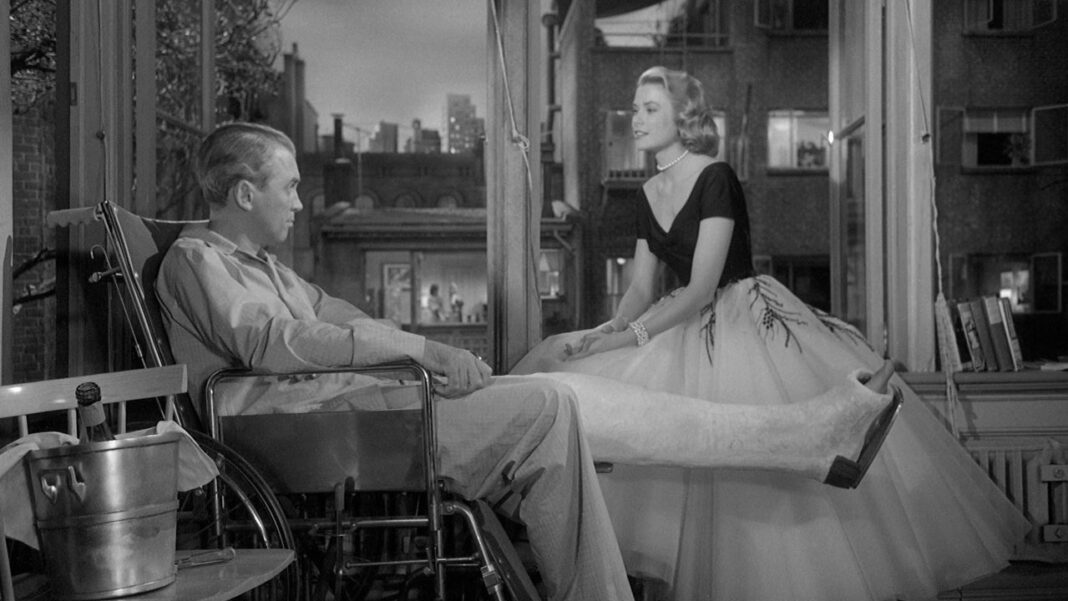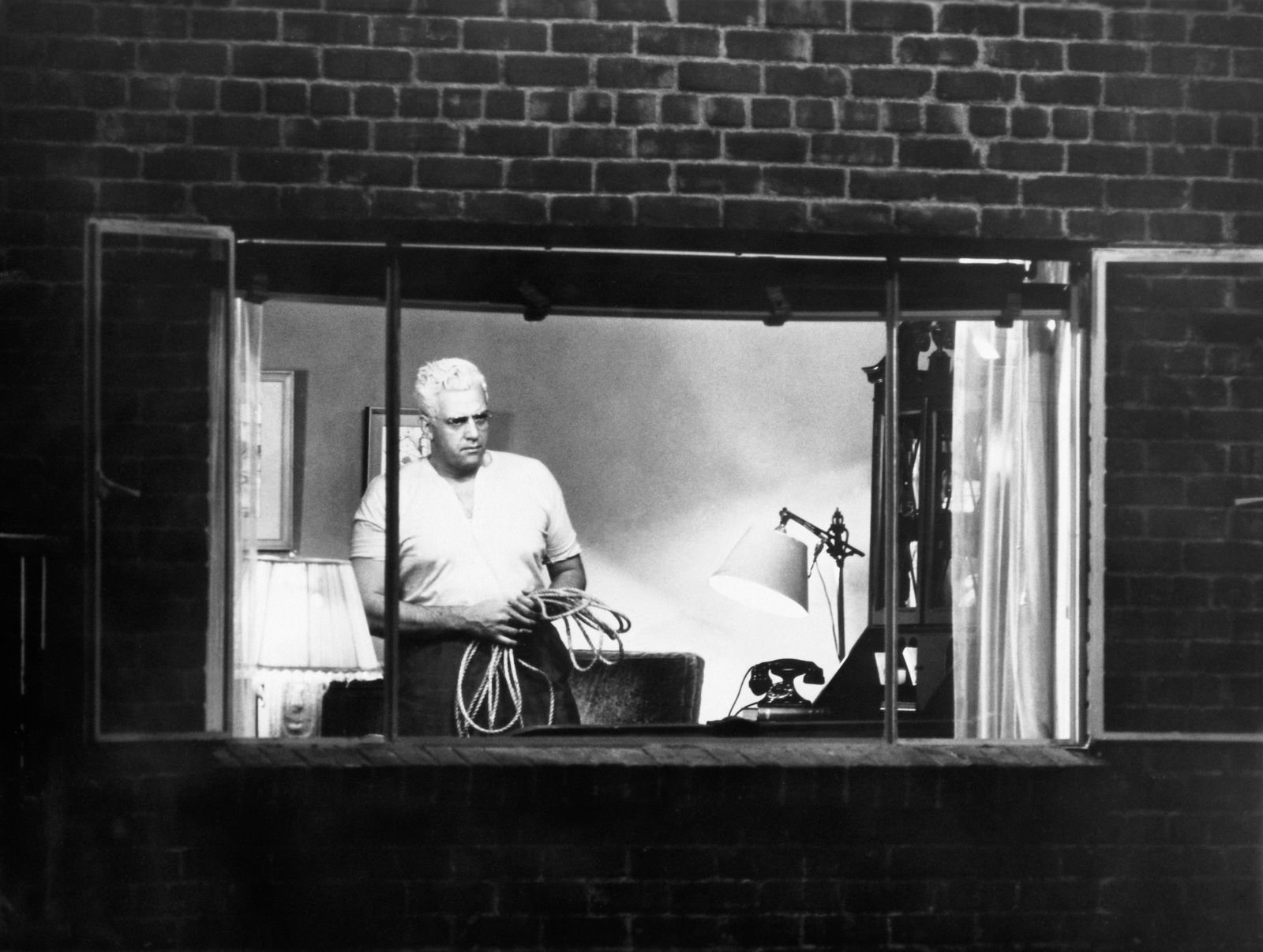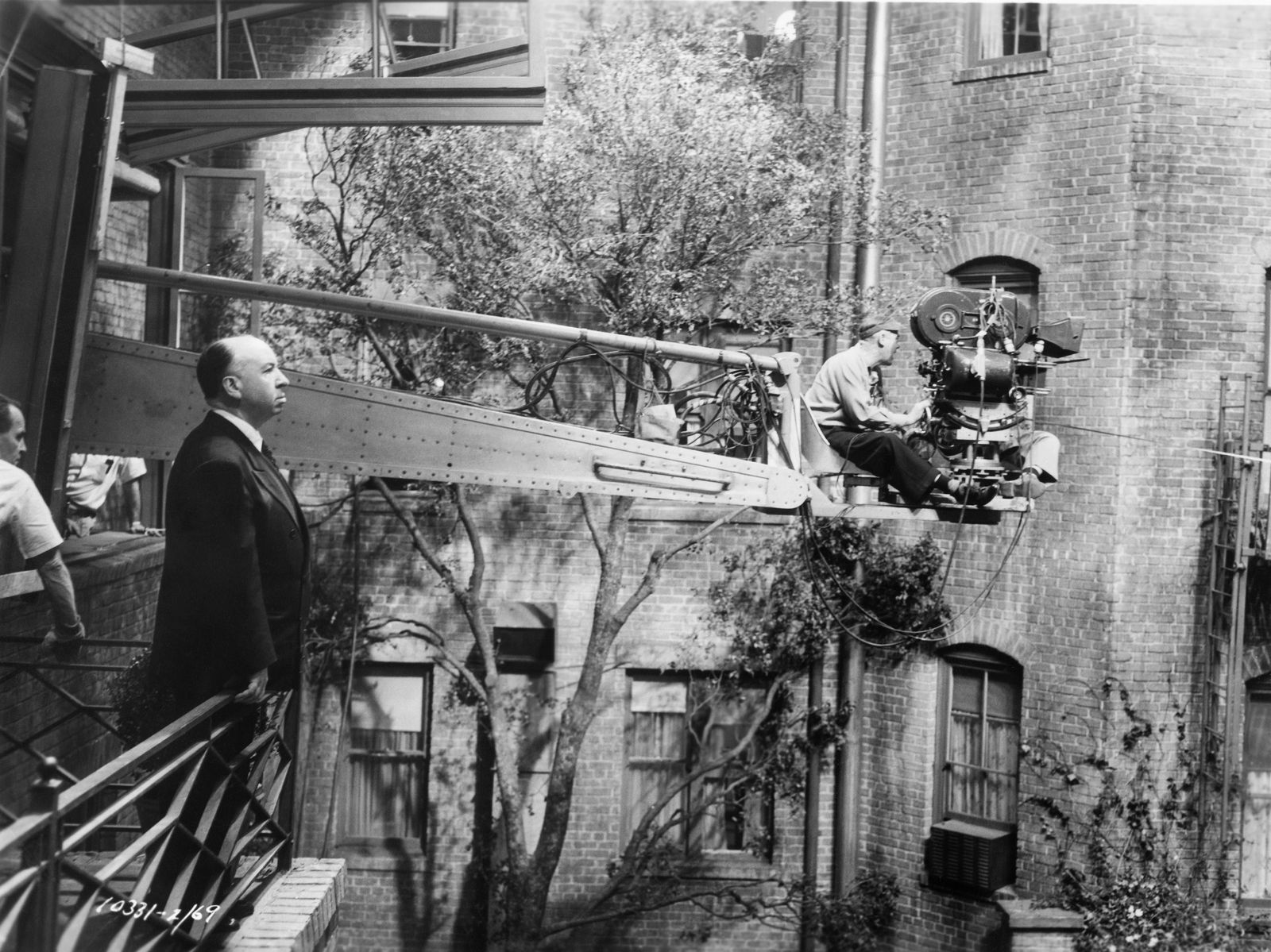Rear Window, Alfred Hitchcock’s 1954 thriller, captured many of the social anxieties of the Cold War era: paranoia, suspicion, surveillance. But it also ventured, on celluloid, into controversial territory: voyeurism, a daring subject for such sensitive, censorship-laden cinematic times. When most movie studios were making musicals and melodramas, Hitchcock crafted a suspenseful film about the thrill of spying on others. And though a grandiose Hollywood set was necessary to bring the auteur’s vision to life, the main character never leaves his apartment.
The movie stars James Stewart as a photojournalist named Jeff, who, housebound by injury, takes to spying on the neighbors from his Manhattan apartment’s windows. As cabin fever and the summer heat set in, Jeff starts to suspect one man in his sights has murdered his wife. Jeff’s glamorous girlfriend, Lisa (Grace Kelly), is then recruited to help set up a sting and get to the bottom of the macabre mystery.
Much of the film’s critical acclaim can be attributed to Hitchcock’s magnificent set, a Manhattan cityscape created on the Paramount studio lot in California. Not only did the narrative’s now-iconic backdrop look entirely authentic, it also proved an ingenuous play by the director to minimize concerns about Rear Window’s lurid themes.
Below, AD relives the cinematic masterpiece through behind-the-scenes snapshots and details from a new book on the Rear Window set.



